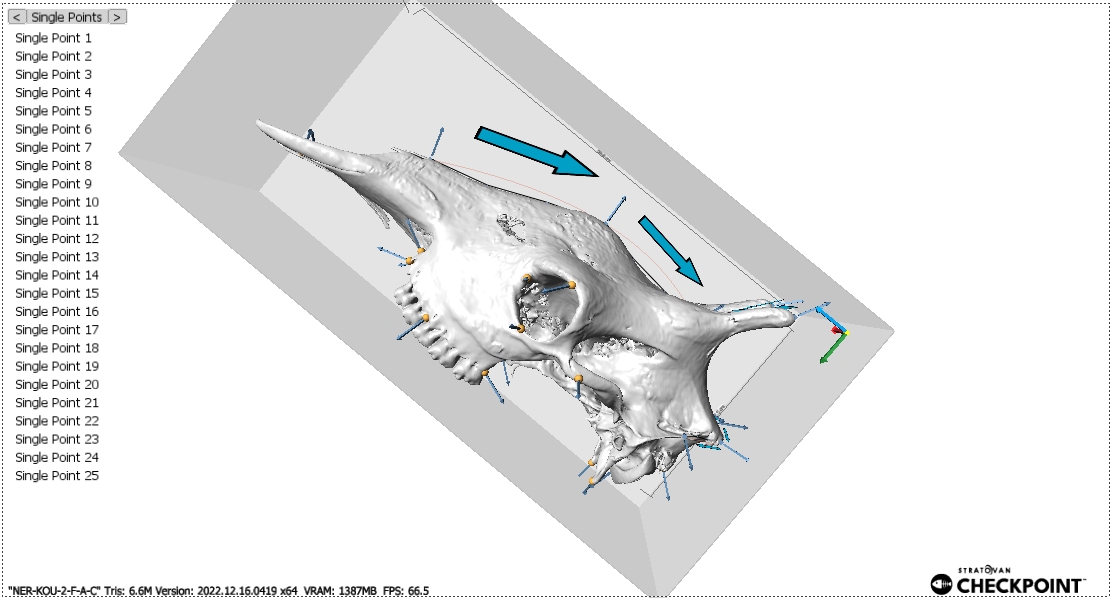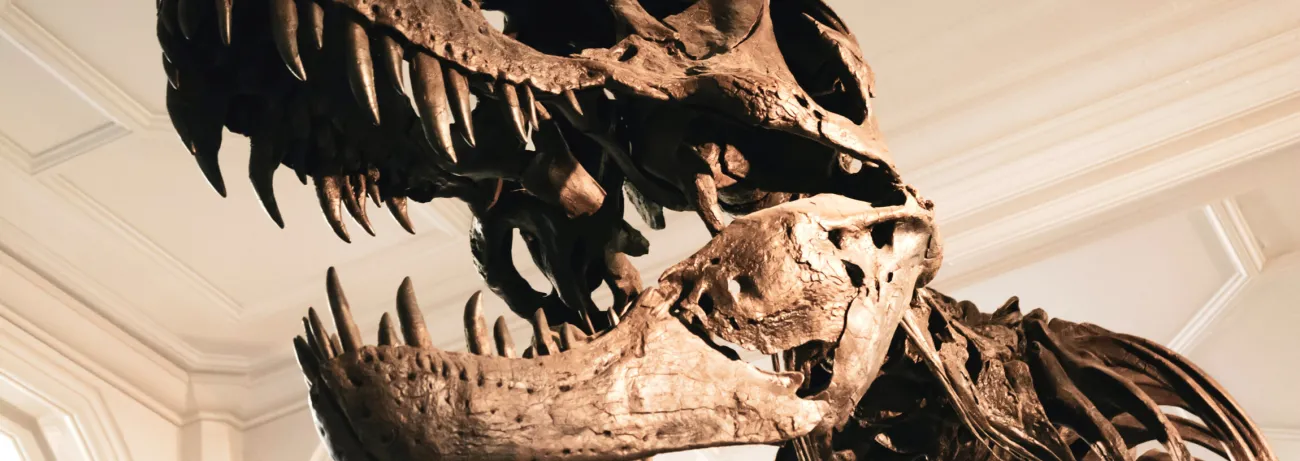
Download Checkpoint Free Today!
Affiliation
Nikolaos Kargopoulos, PhD
Postdoctoral Fellow at the Department of Biological Sciences, University of Cape Town, Cape Town, South Africa
Giraffe Conservation Foundation, Eros, Windhoek, Namibia
Summary of the project
He is investigating the taxonomy of the extant giraffe, genus Giraffa. Some taxonomic schemes suggest that there is only 1 species with 1 subspecies in Africa, whereas others distinguish up to 11 different species. The methodologies up to date have been based on traditional zoology (measurements, morphology) and genetics. The Giraffe Conservation Foundation currently recognizes 8 subspecies and 4 species of giraffe, based mostly on genetic data. Clarifying the exact number of giraffe species and subspecies, as well as their range and diversity, is essential to focus on their conservation. Taxonomic changes alter not only the conservation status of a form, but also the potential acts that conservation teams can perform for its protection. Usual challenges to taxonomic giraffe studies include: lack of exact geographic locations, low sample sizes, scattered specimens all over the world and huge variability of all the different populations that conceal the true similarities and differences if taken as individual cases.
Approach
In this particular project they are using skulls because they include some of the most important skeletal structures that can be affected by sexual selection (ossicones), age (cranial proportions), way of living (dental wear) etc. Their main goal is to collect the largest possible sample of giraffe skulls from all over Africa and perform a thorough comparison of the established forms using 3D geometric morphometrics. We are going to use museum specimens with sufficient provenance data, but we are mainly focusing on specimens found in the field by GCF, its partners, private samples etc. This methodology offers a whole new perspective to the traditional taxonomy, enabling us to detect patterns in the variability that, otherwise, would have been hidden.
Landmarks
The landmark protocol is not yet standardized. This is something that they will work on throughout the project depending on the preservation of the studied skulls. Their main thoughts include points at certain key areas of the skull (widest zygomatic arch, base of the foramen magnum etc.), contours for the upper teeth, contours or patches for the ossicones etc. The main problem is that giraffe, especially the male ones, are characterized by secondary ossification of the dorsal part of the cranium. This means that it is nearly impossible to collect type 1 landmarks.
Testimonial
"Checkpoint is a widely used, reliable software that offers an easy environment for the user, a variety of options and it is really fast with low computing requirements. As the project continues, we will be able to elaborate more on the ups and downs of the software."
Personal Info
Nikolaus is mainly a palaeontologist, focusing on carnivorans, but also on several other mammalian groups. This has made him very familiar with mammalian skull morphology and has shown me the necessity of taxonomy, in order to proceed to consequent steps. Before my moving to Cape Town, he was doing his PhD in the Eberhard Karls University of Tübingen, and my Bachelor’s and Master’s in the National and Kapodistrian University of Athens. He has been experimenting with Geometric Morphometrics (2D and 3D) for several years. He has attended classes and seminars on this topic at the Universities of Athens and Cape Town, as well as through Transmitting Science. He is currently collaborating with Jesus Marugán-Lobón, who is one of the leading experts of Geometric Morphometrics in Europe. Additionally, he is collaborating with Julian Fennessy from GCF, who is one of the most knowledgeable people in giraffe conservation and ecology, as well as with Anusuya Chinsamy-Turan, who is an expert on bone histology and has worked on a very wide range of vertebrates, offering her insight on the developmental changes of the skulls.
Download Checkpoint Free Today!
Related Publications
The project on 3D GM on giraffe skulls is at its beginning, so there are no published results about it yet. However, you can find more information about the discussed topics here:
Taxonomy and Conservation
Costello M., B. Vanhoorne, W. Appeltans. 2015. Conservation of biodiversity through taxonomy, data publication, and collaborative infrastructures. Conservation Biology 29(4):1094–1099
Ely C. V., S. A. de Loreto Bordignon, R. Trevisa, I. I. Boldrini. 2017. Implications of poor taxonomy in conservation. Journal for Nature Conservation 36:10–13
Mace G. 2004. The role of taxonomy in species conservation. Phil. Trans. R. Soc. Lond. B 359:711–719.
Morrison W.R. III, J.L. Lohr, P. Duchen, R. Wilches, D. Trujillo, M. Mair, S. S. Renner. 2009. The impact of taxonomic change on conservation: Does it kill, can it save, or is it just irrelevant? Biological Conservation 142:3201–3206.
Schmidt C., S. Hoban, M. Hunter, I. Paz-Vinas, C. Garroway. In Press. Genetic diversity and IUCN Red List status. Conservation Biology. DOI: 10.1111/cobi.14064.
Recent viewpoints on giraffe taxonomy
Coimbra R., S. Winter, V. Kumar, K.-P. Koepfli, R. Gooley, P. Dobrynin, J. Fennessy, A. Janke. 2021. Whole-genome analysis of giraffe supports four distinct species. Current Biology 31:2929–2938.
Coimbra R., S. Winter, B. Mitchell, J. Fennessy, A. Janke. 2021. Conservation Genomics of Two Threatened Subspecies of Northern Giraffe: The West African and the Kordofan Giraffe. Genes 13(221):1–14.
Dagg A. I. 2014. Giraffe: Biology, Behaviour, and Conservation. Cambridge: Cambridge University Press.
Fennessy J., T. Bidon, F. Reuss, V. Kumar, P. Elkan, M. Nilsson, M. Vamberger, U. Fritz, A. Janke. 2016. Multi-locus Analyses Reveal Four Giraffe Species Instead of One. Current Biology 26:2543–2549.
Groves, C. and Grubb, P. 2011. Ungulate Taxonomy. The Johns Hopkins University Press, Baltimore, USA.
Petzold A., A. Hassanin. 2020. A comparative approach for species delimitation based on multiple methods of multi-locus DNA sequence analysis: A case study of the genus Giraffa (Mammalia, Cetartiodactyla). PLoS ONE 15(2):e0217956.
Petzold A., A.-S. Magnant, D. Edderai, B. Chardonnet, J. Rigoulet, M. Saint-Jalme, A. Hassanin. 2020. First insights into past biodiversity of giraffes based on mitochondrial sequences from museum specimens. European Journal of Taxonomy. 703:1–33.
Shorrocks B. 2016. The Giraffe: Biology, ecology, evolution and behaviour. West Sussex: John Wiley & Sons.
Winter S., J. Fennessy, A. Janke. 2018. Limited introgression supports division of giraffe into four species. Ecology and Evolution 8:10156–10165.
Publications of J. Marugán-Lobón on 3D GM
Bright J., J. Marugán-Lobón, E. Rayfield, S. Cobb. 2019. The multifactorial nature of beak and skull shape evolution in parrots and cockatoos (Psittaciformes). BMC Evolutionary Biology 19:104.
Marugán-Lobón J., D. Blanco Miranda, B. Chamero, H. Martín-Abad. 2013. On the importance of examining the relationship between shape data and biologically meaningful variables. An example studying allometry with geometric morphometrics. Revista Española de Paleontologia 28(2):139–148.
Marugán-Lobón J., S. Nebreda, G. Navalon, R. Benson. 2022. Beyond the beak: Brain size and allometry in avian craniofacial evolution. Journal of Anatomy 240:197–209.
Marugán-Lobón J., A. Watanabe, S. Kawabe. 2016. Studying avian encephalization with geometric morphometrics. Journal of Anatomy 229:191–203.
Navalon G., S. Nebreda, J. Bright, M. Fabbri, R. Benson, B.-A. Bhullar, J. Marugán-Lobón, E. Rayfield. 2021. Craniofacial development illuminates the evolution of nightbirds (Strisores). Proc. R. Soc. B 288: 20210181.
Download Checkpoint Free Today!

